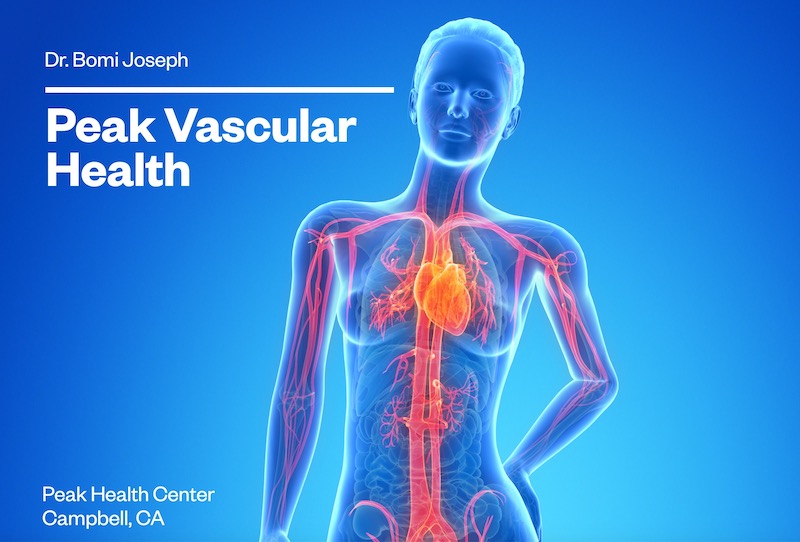
Table of Contents
Cardiovascular Traits of Peak Health
High Performance Anatomy
The Cardiovascular System
The Amazing Heart
Oxygen Consumption
Blood Utilization During Rest
Blood Utilization During Exercise
Peak Vascular Health
Forward
I train people to move from one spot to another in the most harmonious and efficient manner possible. It includes running, climbing, swinging, vaulting, jumping, rolling, quadrupedal, and any movement deemed suitable. It ranges from non-combat martial arts to full-contact fighting.
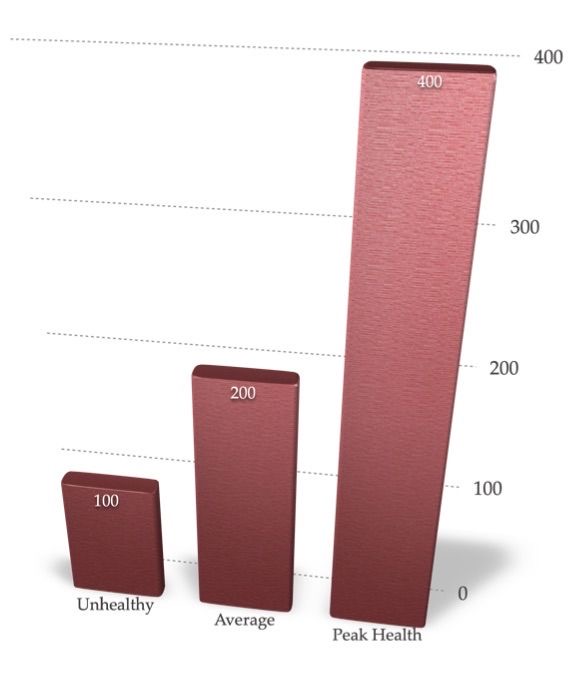
Some people hardly fall sick. They never take flu vaccines and are constantly around sick people. They definitely get routinely infected but their body is fighting off the infections. This is one of the many traits very healthy people have.
Unhealthy individuals recharge their ATP molecules 100 times a day only. On the average it happens about 200 times a day. A very healthy individual recharges his fuel cells about 400 times a day.
Hundreds of thousands of complex biochemical cycles are constantly churning in the human body. The major fuel source for all these interactions is a molecule called ATP (adenosine triphosphate). When it releases energy, ATP gets converted to ADP (adenosine diphosphate). One of the many amazing things about the body is that when the body gets some rest, or energy (usually from food) the ADP gets converted back into ATP. The waste material becomes the fuel again!
About 250 grams (0.55 lbs) of ATP gets converted back and forth between ATP and its ADP form. The Division of Clinical Physiology, Swedish National Centre Research in Sports, looked at how many times this conversion happens per day. Unhealthy individuals have a sluggish conversion rate of about 100 times per day. This simulates the 250 grams of ATP act like it was 25 kgs (55 lbs). On average, ATP recharges 200 times/day to simulate a fuel mass of 50 kgs or 110 lbs. A very athletic person recharges 400 times and carries a monstrous equivalent of 100 kgs (221 lbs) of fuel in them.
“Really healthy bodies produce twice the power of average bodies with 30% less effort!”
- Dr. Bomi Joseph
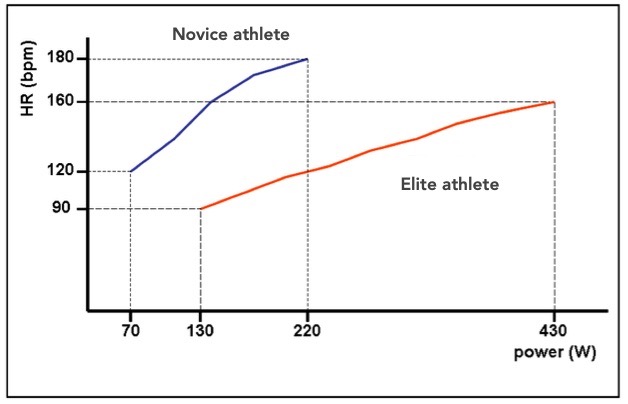
There are reasons healthy people carry a fuel source equivalent to 221 lbs compared to 55 lbs for unhealthy individuals. There is far more metabolic activity being fueled in a healthy person. The effort expended to generate power by an athlete versus a novice is shown in the chart on the right. A novice taps out when his heart races at 180 beats per minute (BPM) and generates 220 Watts (W) of power. An elite athlete’s heart hardly breaks a sweat at 110 BPM generating the same power. The athlete keeps generating power and ends up producing 430 W of power while his heart is only at 160 BPM.
A healthy person’s body is composed of “high performance” tissue. He performs at a high level. His tissue recovers rapidly after use. This recovery is fueled by a rapid ATP/ADP recharge rate. This rapid ATP/ADP recharge rate allows him to be in a more relaxed state. This paradox makes exercising a chore for unhealthy people and usually an enjoyable activity for healthy people.
A healthy person’s body is composed of “high performance” tissue. He performs at a high level. His tissue recovers rapidly after use. This recovery is fueled by a rapid ATP/ADP recharge rate. This rapid ATP/ADP recharge rate allows him to be in a more relaxed state. This paradox makes exercising a chore for unhealthy people and usually an enjoyable activity for healthy people.

- The human anatomy is composed of numerous organs: brain, heart, arteries, veins, muscles, liver, gall bladder, kidney, skeleton, intestines, lymph nodes, lungs, spleen, bone marrow, stomach, pancreas, urinary system, reproductive organs, to name a few.
- The organs are made up of various tissues such as: connective tissues, blood components, adipose or fatty tissue, connected bone tissue, cartilage and differing types of muscles.
- The tissue structure of healthy individuals differs significantly from unhealthy individuals. This is a significant component of health and it is going to be explained in this book.
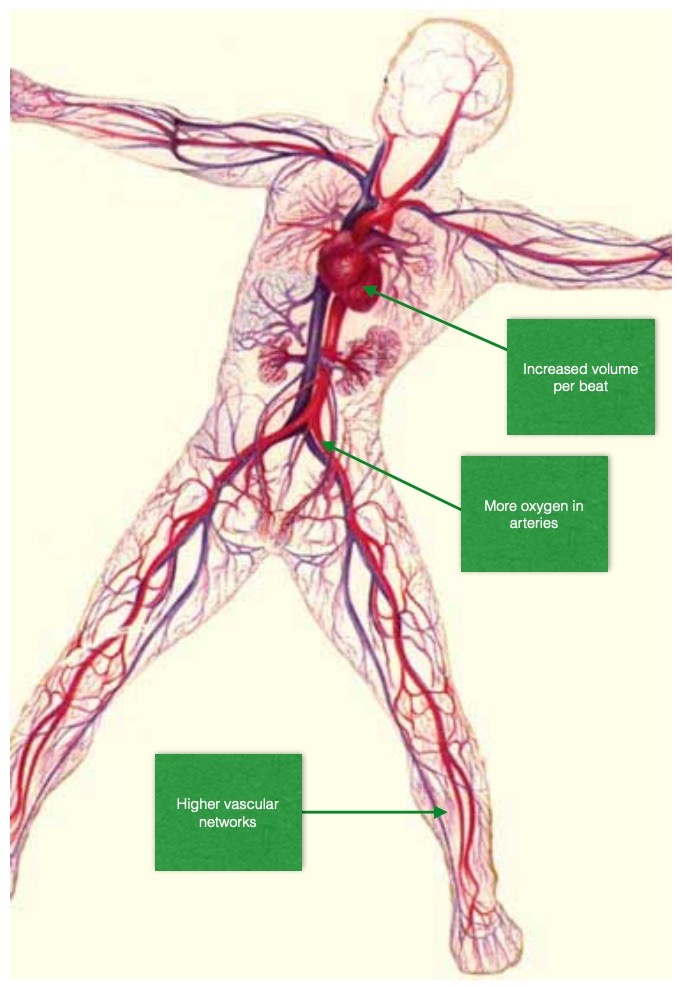
I picked the cardiovascular system to highlight because it is tightly integrated into every other physiologic system in the human body. A healthy cardiovascular system usually means a healthy individual. It is hard to argue that a human can be healthy while their cardio vascular system is weak.
The cardiovascular system is composed of the heart, the vascular system and the blood that flows through them. They serve multiple overlapping functions:
- They transport and exchange respiratory gases (oxygen and carbon dioxide), nutrients, waste products, hormones and chemical messengers.
- They maintain fluid balance, pH balance, body temperature and regulate blood pressure.
- They prevent of blood loss and fight infection through white blood cells and the lymphatic tissue.
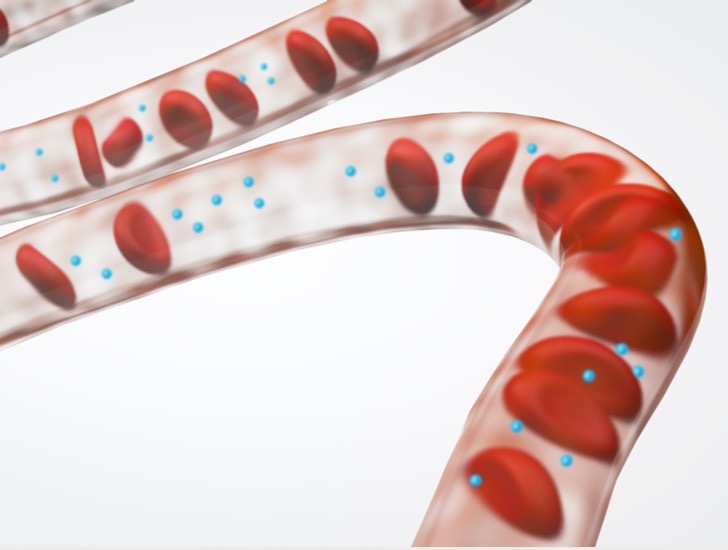
No more dry biology, I promise!
A very healthy person has a significantly more developed cardiovascular system compared to an average person. Their heart is more muscular and pumps higher volume of blood with each “stroke” or beat. The vascular network is very elastic and dilates easily to accommodate the higher volume of blood. The oxygen concentration in the blood is greater. The quality of the blood is better. The vascular system is also more elaborate. It is finely branched and carries more blood, faster, to the areas that need it.
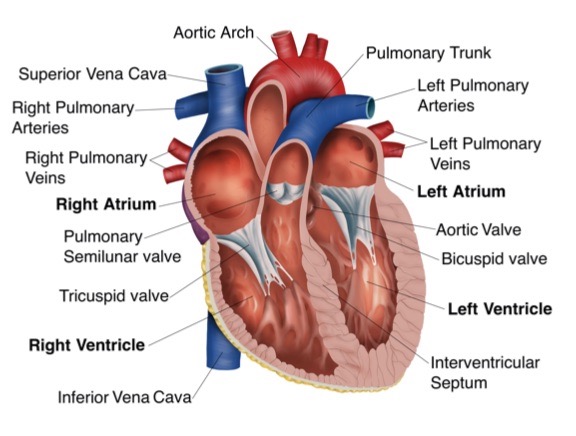
- The heart serves as a pump and provides the contracting force required to push the blood through various organs. A 70 kg male’s heart weighs about 300 grams. That’s 0.43% of his body weight. During rest, this small organ receives 4% of the resting blood flow and 10% of the resting oxygen consumed.
- An average human male has 77 ml/kg of blood. A very athletic male may have up to 85 ml/kg, but not higher than that. The differences between an unhealthy man and a healthy man is the quality of the blood and how the blood is used.
- The heart is made up of muscles called “myocytes”. These muscles (the “contractile myocytes”) contract in unison and pump the blood. There are dedicated cells to coordinate the “stroke” (or pump). These cells (the “pacemaker conductive cells”) send coordinated electrical signals to the myocytes to cause the heart to squeeze in a torquing motion and pump in unison.
The right ventricle pumps the blood through the pulmonary valve to the lungs, where it becomes oxygenated. The left atrium receives oxygenated blood from the lungs and pumps it through the mitral valve to the left ventricle. The left ventricle pumps oxygen-rich blood through the aortic valve to the aorta and the rest of the body.
The left ventricle pumps oxygenated blood to the entire body. The volume of blood pumped per beat or “stroke”, is called the stroke volume. The amount of blood pumped by the left ventricle in a minute is called the cardiac output.
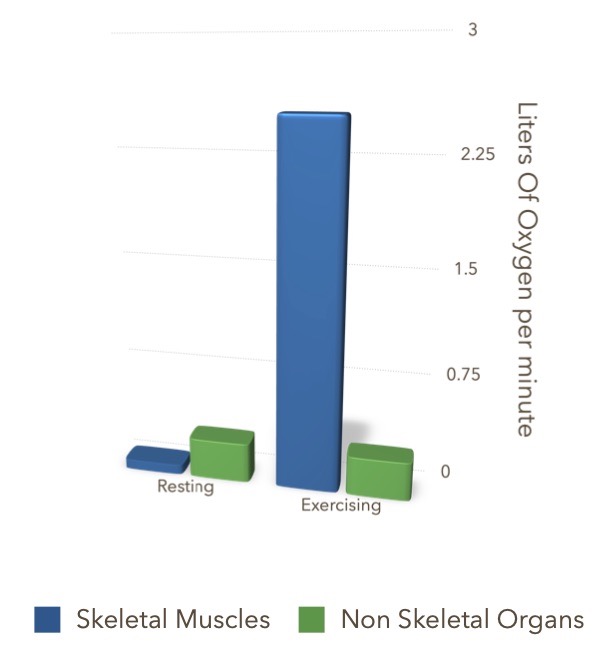
The cardiovascular system is one of the best measures of the overall health of an individual. And the “Maximal Oxygen Consumption”, or “Vo2 Max”, is the best measure of the health of the cardiovascular system. Therefore, Vo2 Max is one of the best measures of human health. As humans start physical activity, their heart rate increases and there is a redistribution of blood away from non exercising muscles to the exercising muscles. In order to keep things simple, and to account for body weight, I am going to refer all subsequent measures of Vo2 Max to a male who weighs 70 kgs (152 lbs). This is the weight of a “reference” male in most medical text books. This reference male uses about 40 mL of oxygen, per kilogram of body weight, per minute, when he is exercising at maximum effort. That is about 2.8 liters/ minute.
When the reference male is at rest, his heart pumps 0.35 liters of oxygen per minute. 0.288 liters of oxygen per minute is used by the non skeletal organs and only 0.07 liters a minute is used by the skeletal organs.
When this male is at his peak physical activity, his body pumps 2.52 liters of oxygen per minute through his skeletal muscles, where it is needed, and only 0.28 liters of oxygen per minute through his non skeletal organs.
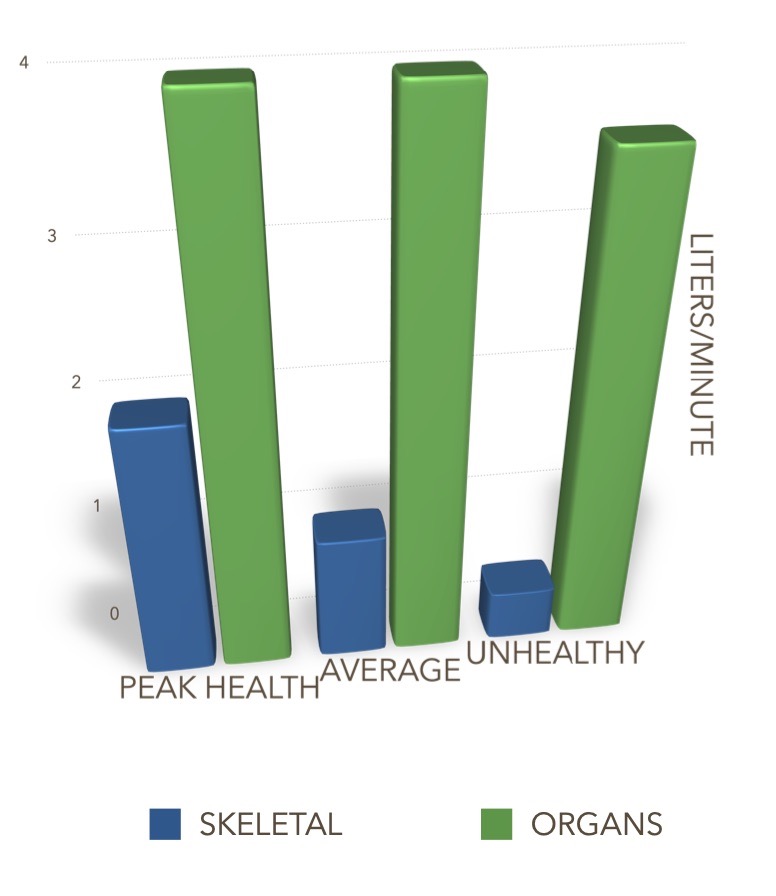
A weak person pumps about 4 liters of blood a minute during rest. A normal person pumps about 5 liters/min and a person in peak health pumps about 6 liters/min of blood. This difference gets more interesting when we examine how it is used. A weak person uses 3.6 liters/min for the organs and only 0.4 liters/min for the skeletal system at rest. The quantity and quality of the skeletal muscle is low and therefore less blood is needed for the skeletal muscles and more is needed for the non- skeletal organs.
A person in peak health, at rest, pumps a bit more blood into his skeletal muscles (2 liters/min versus 0.4 liters/minute). While he still pumps more blood into his organs and there is not much difference between the overall profile of a person in peak health and an unhealthy person. This changes a lot when you compare a weak person to a person in peak health during physical exertion.
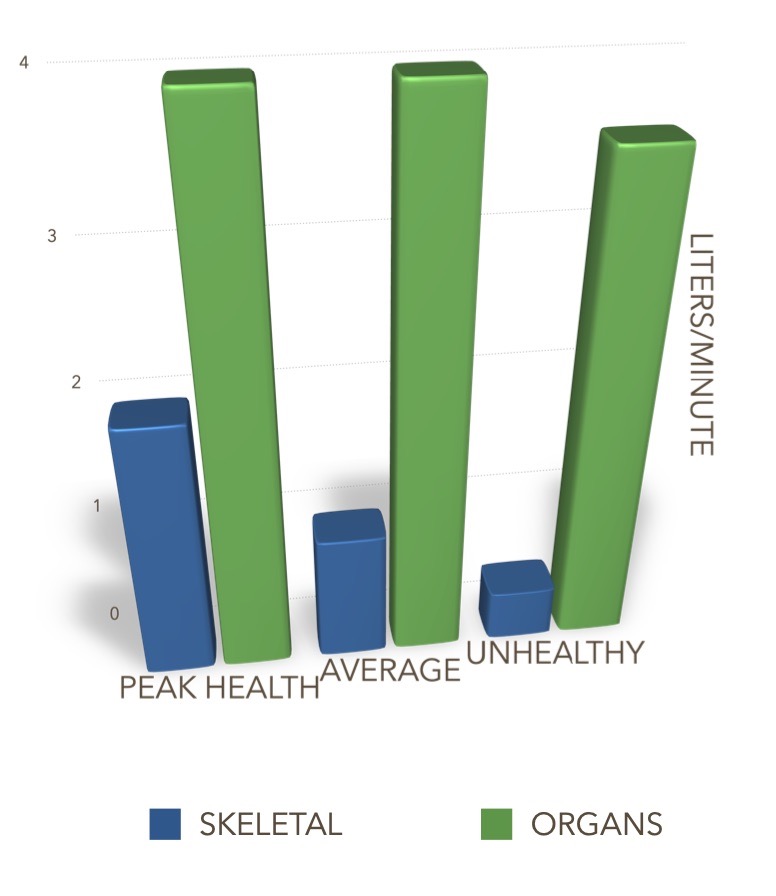
A weak person pumps about 15 liters/min of blood when exerting. His blood flow through his organs is about the same as when resting (4 liters/min) but his blood flow to his skeletal muscles increases from 0.4 liters/min to 11 liters/ min, when he huffs and puffs and exerts. An average person pumps about 3 liters/min through his organs and a significantly higher 27 liters/min of blood to his skeletal muscles when exerting.
Blood performs numerous critical functions in the body. When the heart pumps a phenomenal amount of blood thorough the tissues, it is also pumping more oxygen.
There is increased supply of nutrients such as glucose, amino acids, plasma proteins and blood lipids. There is a larger amount of waste produced by high performance muscles, which is removed by the blood, such as, carbon dioxide, urea and lactic acid. There is far greater immunological response from the body because foreign materials get detected sooner and the antibody response from the immune system is faster.
If there is any damage to the tissue, recognition and repair of the damage is faster. Transport of hormones happens faster. The coagulation of leaking blood and the healing of the tissue happens faster. Regulation of body temperature and pH happens quickly and more reliably. Finally, all the “hydraulic” elements of blood flow happen much faster and more reliably in a person who is pumping 47 liters/minute through his cardiovascular tissue than a person who is pumping 11 liters/min.
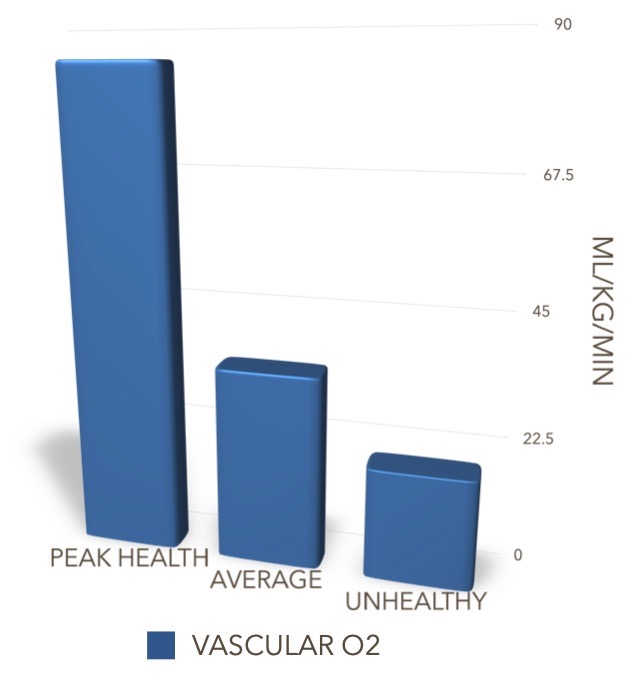
Attaining Peak Health means developing high performance tissues that produce high output with very little effort. Nowhere is this more apparent than vascular tissue.
In a previous section I mentioned that increased blood flow meant that increased oxygen flowed thorough the tissues. Increased vascular development and oxygen utilization is a key indicator of health for all the reasons elaborated previously.
In Conclusion
A person in poor health usually has a weak cardiovascular system that can pump a maximum of 20 ml/kg/min of oxygen. An average male pumps a maximum of about 35 mil/kg/min of oxygen. A person in “peak health” can pump up to 85 ml/kg/min of oxygen.
Attaining “peak health” is not difficult. It does not require effort. It requires consistency. It also requires a disciplined training regimen that increases the load, and repetition, of the training as the performance of the human tissue increases.
The best way to develop powerful vascular tissue, along with other tissue, is a circuit of 20 full squats, 10 pull ups and 30 push ups, 5 to 7 times without a break. After each set your heart rate with keep increasing till you “break.”
If you cannot complete this set, build up to it. Combining this with interval sprints, deep fascia stretching and power breathing is a great way to attain vascular health.
Eat till you are 80% satiated and eat more vegetables with insoluble fibre. Eat, move, meditate and avoid people, places and things that stress you. You will gradually attain Peak Health.

P.S. If you've enjoyed this article, please share it on social media and check out our Peak Health YouTube channel for more great health content.
Also...check out Peak Health's line of elite cardiovascular support supplements for blood pressure management, cholesterol, artery health, and heart protection:




